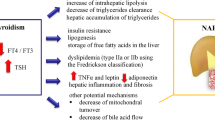Abstract
This study was conducted to determine and compare serum trace metal levels in viral hepatitis-associated chronic liver disease. Of 98 patients aged 43 (± 13) [mean (± SD)] years, 83 (85%) were seropositive for hepatitis B surface antigen (HBsAg) and 15 (15%) were seropositive for anti-hepatitis C virus (HCV). Twenty-five patients had chronic persistent hepatitis, 32 chronic active hepatitis, 21 post-necrotic cirrhosis, and 20 hepatocellular carcinoma. Determination of fasting serum trace metal levels (zinc, copper, calcium, magnesium, and phosphorus) was performed after the patients had been on a 2-day diet containing 10–12 mg zinc/day. Compared to healthy volunteers (n=30), serum zinc levels were significantly decreased in patients with chronic active hepatitis, cirrhosis, and hepatocellular carcinoma (P≤0.0001), and copper levels were significantly elevated only in patients with hepatocellular carcinoma (P<0.0001). The overall serum levels of calcium, magnesium, and phosphorus were within normal ranges, and levels of calcium and magnesium correlated with serum zinc (P=0.01–0.03). Serum zinc levels correlated with bilirubin, albumin, and cholesterol (P=0.0004≤0.0001), but not with daily urinary zinc excretion. Serum copper levels correlated with alkaline phosphatase and gamma-glutamyltransferase (P=0.008–0.0001). These results suggested that changes in liver cell pathology compounded by functional impairment may alter the metabolism of trace metals, in particular, zinc and copper. The possible relationship of these changes to the pathogenesis of chronic liver disease is discussed.
Similar content being viewed by others
References
Vallee BL. Biochemistry, physiology, and pathology of zinc. Physiol Rev 1959;39:443–490.
Gubler CJ. Copper metabolism in man. JAMA 1956;161:530–535.
Herlong HF, Russel RM, Maddrey WC. Vitamin and zinc therapy in primary biliary cirrhosis. Hepatology 1981;1:348–351.
Versieck J, Barbier F, Speecke A et al. Manganese, copper, and zinc concentrations in serum and packed blood cells during acute hepatitis, chronic hepatitis, and post-hepatitic cirrhosis. Clin Chem 1974;20:1141–1145.
Scholmerich J, Lohle E, Kottgen E, et al. Zinc and vitamin A deficiency in liver cirrhosis. Hepatogastroenterology 1983; 30:119–125.
Keeling PWN, O'Day J, Ruse W, et al. Zinc deficiency and photoreceptor dysfunction in chronic liver disease. Clin Sci 1982; 62:109–111.
Scholmerich J, Krauss E, Wietholtz H, et al. Bioavailability of zinc from zinc-histidine complexes. II. Studies on patients with liver cirrhosis and the influence of the time of application. Am J Clin Nutr 1987;45:1487–1491.
Hill GM, Brewer G, Prasad AS, et al. Treatment of Wilson's disease with zinc. I. Oral zinc therapy regimens. Hepatology 1987;7:522–528.
Brewer GJ, Hill GM, Prasad AS, et al. Oral zinc therapy for Wilson's disease. Ann Intern Med 1983;99:314–320.
DeGroote J, Desmet VJ, Gedick P et al. Acute and chronic hepatitis revisited. Review by an international group. Lancet 1977;II:914–919.
Haeffein KA, Rasmussen AI, Zinc content of selected foods. J Am Diet Assoc 1977;70:610–616.
Murphy EW, Willis BW, Watt BK. Provisional tables on the zinc content of foods. J Am Diet Assoc 1975;66:345–355.
Hackley BM, Smith JC, Halsted JA. A simplified method for plasma zinc determination by atomic absorption spectrophotometry. Clin Chem 1968;14:1–5.
Trudeau DL, Freier EF. Determination of calcium in urine and serum by atomic absorption spectrophotometry (AAS). Clin Chem 1967;13:101–114.
Godfrey K. Simple linear regression in medical research. In: Bailar III JC, Mosteller F. eds. Medical uses of statistics. Massachusetts: Murray Printing 1986:170–204.
Prasad AS. Clinical, biochemical, and nutrition spectrum of zinc deficiency in human subjects. An update. Nutr Rev 1983;41: 197–208.
Kirchgessner M, Roth HP, Spoerl R, et al. A comparative view on trace elements and growth. Nutr Metab 1977;21:119–124.
Karayalcin S, Arcasoy A, Uzunalimoglu O. Zinc plasma levels after oral zinc tolerance test in nonalcoholic cirrhosis. Dig Dis Sci 1988;33:1096–1102.
Aggett PJ, Harries JT. Current status of zinc in health and disease states. Arch Dis Child 1979;54:909–917.
Kittiwarawut P. Zinc, copper, and related enzyme levels in blood of Thai adults up to 60 years old. A thesis submitted in partial fulfillment of the requirements for the degree of Master of Science (Nutrition), Mahidol University 1989.
Olson KB, Heggen G, Edwards CF. Analysis of five trace elements in the liver of patients dying of cancer and noncancerous disease. Cancer 1958;11:554–561.
Wright EB, Dormandy TL. Liver zinc in carcinoma. Nature 1972;237:166.
Brown DA, Chatel KW, Chan AY et al. Cytosolic levels and distribution of cadmium, copper, and zinc in pretumorous livers from diethylnitrosamine-exposed mice and in noncancerous kidneys from cancer patients. Chem Biol Interactions 1980; 32:13–27.
Poswillo DE, Cohen B. Inhibition of carcinogenesis by dietary zinc. Nature 1971;231:447–448.
Duncan JR, Droesti IE. A site of action for zinc in neoplastic tissue. South Afr Med J 1976;50:711–713.
Duncan JR, Dreosti IE, Albrecht CF. Zinc intake and growth of transplanted hepatoma induced by 3-methyl-4-dimethylaminoazobenzine in rats. J Natl Cancer Inst 1974;53:277–278.
Skulchan V, Kritalugsana S, Ruangsomboon O, et al. Serum zinc levels in Thai cancer patients. J Med Assoc Thailand 1987; 70:516–518.
Pramoolsinsap C, Sumalnop K, Busagorn N, et al. Prevalence and outcomes of HBV and anti-HCV seropositive patients with chronic liver disease and hepatocellular carcinoma. Southeast Asian J Trop Med Public Health 1992;23:6–11.
Becking GC. Trace metals in drug metabolism. Med Clin North Am 1976;60:813–830.
Fosta MD, Anderson HL, Dowdy RP, et al. Effect of zinc intake on copper excretion and retention in men. J Nutr 1985; 41:285–292.
Evans GW. Copper homeostasis in the mammalian system. Physiol Rev 1973;53:535–570.
Author information
Authors and Affiliations
Rights and permissions
About this article
Cite this article
Pramoolsinsap, C., Promvanit, N., Komindr, S. et al. Serum trace metals in chronic viral hepatitis and hepatocellular carcinoma in Thailand. J Gastroenterol 29, 610–615 (1994). https://doi.org/10.1007/BF02365444
Received:
Accepted:
Issue Date:
DOI: https://doi.org/10.1007/BF02365444




